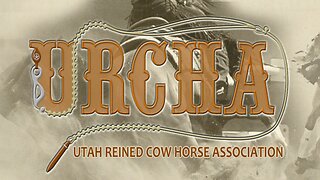Premium Only Content

Retracts Fail - Giant Scale F4U Corsair WWII Warbird RC Plane Belly Lands at Warbirds Over Whatcom
Watch this video and you will see the retracts fail on a Giant Scale F4U Corsair WWII Warbird RC Plane when it is forced to belly land at Warbirds Over Whatcom this past July.
Link to similar RC Planes: https://bit.ly/3Uio952
The links in this description are affiliate links. They give me a small commission on sales which helps support the channel and keep it independent: https://www.amazon.com/shop/gblyndensrc
Visit https://www.gblynden.com/ to learn more about the hobby!
RC Accessories:
- Spektrum Smart Checker: https://bit.ly/329hl12
- Spektrum IX20 Radio: https://amzn.to/3qFTbHe
- Spektrum AR620 Receiver: https://bit.ly/3Aay021
Other Fun RC Planes:
- Arrows Husky 1800mm PNP STOL RC Plane: https://bit.ly/3v3qQM9
- Arrows BAe Hawk EDF Jet: https://bit.ly/2VY0HB7
- Arrows T-33 EDF Jet: https://bit.ly/3h3Z24a
- Arrows F-86 EDF Jet: https://bit.ly/3hIli3C
- Arrows F-15 EDF Jet: https://bit.ly/3Cxi10D
- Arrows RC MiG-29 EDF Jet: https://bit.ly/2ZDmjBY
- Arrows RC Marlin EDF Jet: https://bit.ly/2LUe4cN
- Arrows T-28 Trojan RC Warbird: https://bit.ly/2LOr3N4
- Arrows Bigfoot RC Plane: https://bit.ly/2TJliVh
This is a Giant Scale Corsair makes my Parkzone F4U-1A Corsair and Hobbyzone F4U Corsair seem like a kitten in comparison. I am not even sure how I would compare the E-flite UMX Corsair to this plane, so I wont even try lol
I hope you enjoyed this video and that you come back to see my other videos in the future.
Operational History
The performance of the Vought F4U Corsair was impressive. The F4U-1 was considerably faster than the Grumman F6F Hellcat and only 13 mph slower than the Republic P-47 Thunderbolt;all three were powered by the R-2800. The F4U-1 reached its maximum speed at 19,900 ft (6,100 m),[32] and used a mechanically supercharged engine to help fight World War II.[33]
The U.S. Navy received its first production F4U-1 on 31 July 1942, but getting it into service proved difficult. The framed "birdcage" style canopy provided inadequate visibility for deck taxiing. Even more seriously, the machine had a nasty tendency to "bounce" on touchdown, which could cause it to miss the arresting hook and slam into the crash barrier, or even go out of control. The long "hose nose" visibility problem and the enormous torque of the Double Wasp engine also created operational problems.
Carrier qualification trials on the escort carrier USS Sangamon, on 25 September 1942, caused the U.S. Navy to release the type to the United States Marine Corps.[34] Early Navy pilots spoke disparagingly of the F4U as the "hog", "hosenose" or "bent-wing widow maker".[35] After all, the U.S. Navy still had the Grumman F6F Hellcat, which did not have the performance of the F4U but was a far better deck landing aircraft. The Marines needed a better fighter than the F4F Wildcat. The type was declared "ready for combat" at the end of 1942, though only qualified to operate from land bases until carrier qualification issues were worked out.[36]
The first recorded combat engagement World War Two was on 14 February 1943, when Corsairs of VMF-124 under Major Gise assisted P-40s and P-38s in escorting a formation of Consolidated B-24 Liberators on a raid against a Japanese aerodrome at Kahili. Japanese fighters contested the raid and the Americans got the worst of it, with four P-38s, two P-40s, two Corsairs and two Liberators lost. No more than four Japanese Zeros were destroyed. A Corsair was responsible for one of the kills, although this was due to a midair collision. The fiasco was referred to as the "Saint Valentine's Day Massacre".[42][43] Although the Corsair's combat debut was not impressive, the Marines quickly learned how to make better use of the aircraft and started demonstrating its superiority over Japanese fighters. By May, the Corsair units were getting the upper hand, and VMF-124 had produced the first Corsair ace, Second Lieutenant Kenneth A. Walsh, who would rack up a total of 21 kills during the war.[44]
-
 6:44
6:44
GBLynden's RC
1 year agoTim's Modded FMS Pitts V2 1400mm RC Biplane
213 -
 LIVE
LIVE
VapinGamers
1 hour agoTools of the Trade - Of Thumbnails and Titles, What's Important? - !rumbot !music
91 watching -
![Mr & Mrs X - [DS] Trafficking Empire – How Epstein Built His Web of Wealth and Deceit:Part 1 - Ep 5](https://1a-1791.com/video/fww1/f0/s8/1/o/k/J/d/okJdz.0kob-small-Mr-and-Mrs-X-DS-Trafficking.jpg) 52:11
52:11
X22 Report
2 hours agoMr & Mrs X - [DS] Trafficking Empire – How Epstein Built His Web of Wealth and Deceit:Part 1 - Ep 5
58.1K10 -
 1:13:18
1:13:18
Wendy Bell Radio
6 hours agoPet Talk With The Pet Doc
34.3K57 -
 LIVE
LIVE
dieseldesigns
5 hours agoExploring Labs In the DARK! // Abiotic factor
9 watching -
 LIVE
LIVE
BBQPenguin_
4 hours agoDragonball Z - The Android Saga
167 watching -
 LIVE
LIVE
Total Horse Channel
4 hours ago2025 URCHA Futurity | Derby & Horse Show | Saturday
44 watching -
 LIVE
LIVE
DynastyXL
4 hours ago🔴LIVE: Fortnite The Comeback Stream Starts Here🎃
54 watching -
 1:38:57
1:38:57
njgaming23
2 hours agoCoffee and Morning vibes #rumbletakeover
6.33K -
 1:09:19
1:09:19
Ami's House
2 days ago $14.96 earnedWhen Defending Israel Backfires: Are We Pushing Our Last Friends Away? With Karys Rhea
177K184